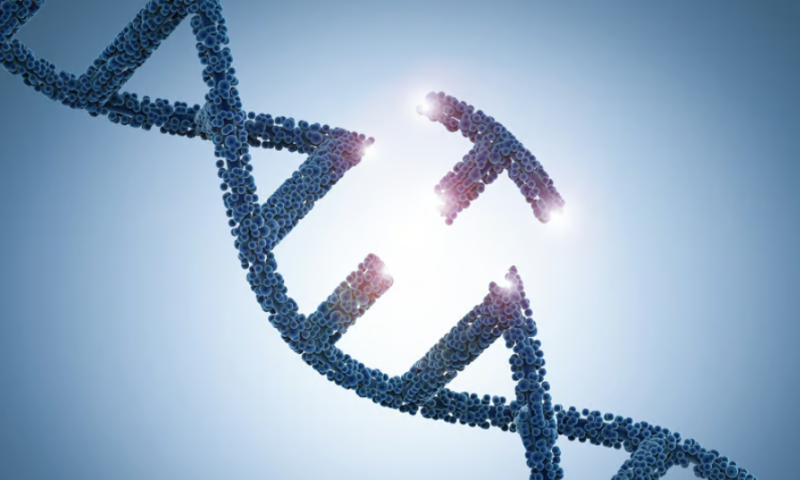In a study published May 1 in Proceedings of the National Academy of Sciences, a research team led by scientists from the Lewis Katz School of Medicine at Temple University and the University of Nebraska Medical Center (UNMC) described how they used CRISPR to inactivate or snip out two different genes in HIV-infected humanized mice. By combining this approach with a long-acting form of antiretroviral therapy, the researchers were able to eliminate the virus in around 60% of the models—a big boost from the 29% they reported back in 2019.
“This isn’t starting from scratch—it’s building on an observation we made the first time we eliminated HIV,” Howard Gendelman, M.D., co-senior author, UNMC scientist and co-founder of Exavir Therapeutics, told Fierce Biotech Research in an interview. “The big news is the addition of two gene therapies.”
Soon after infection, HIV DNA integrates itself into the host genome, making it impossible to cure with current antiretroviral therapy, or ART, alone. And, while ART has made it possible for patients to go from living for just a year following an AIDS diagnosis to having virtually the same life span as individuals without HIV, it’s not without drawbacks. The virus is still present throughout the body, so patients must take medications every day for the rest of their lives to keep it suppressed. That can lead to drug resistance and other complications, Gendelman explained.
“That’s the reason we need a cure,” he said.
In the new study, the teams from Temple University and the University of Nebraska laid out a careful strategy that started with dosing HIV-positive mice with long-acting slow-effective release, or LASER-ART—an ART protocol co-developed by Gendelman and fellow Exavir co-founder Benson Edagwa, Ph.D.
One month later, first author Prasanta Dash, Ph.D., used CRISPR-Cas9 that was developed in the laboratory of Kamel Khalili, Ph.D., of Temple by co-first authors Rafal Kaminski, Ph.D., and Chen Chen to inactivate the gene for CCR5. Knowing from previous experiments that CCR5 levels dropped to their lowest levels seven days later, he and his team at that point initiated a second CRISPR-Cas9 treatment, which was also designed and developed in the Khalili laboratory, to remove the integrated copies of HIV-1 DNA from the host genome, the same one they deleted in the project published in 2019.
Next came the waiting game. The scientists wanted to be sure the virus wouldn’t rebound, so they continued the experiment for a full two months. In mice, HIV rebound usually occurs within two weeks of treatment.
When it was time to see whether the virus had been successfully eliminated, the researchers used multiple highly sensitive techniques to ensure they hadn’t missed even one copy, checking not only their blood but all the organ systems the virus was known to infiltrate. They found no trace of it in six of the 10 animals in the treatment group. Replicating the study gave a similar result: Five of the nine treated mice in a second round of experiments were completely virus free.
“The importance of this strategy is twofold: First, CRISPR remains the method of choice for permanent elimination of the virus, and second, this combination for targeting the virus along with some other method to prevent spread, such as inactivation of CCR5 by CRISPR, can be improved for permanent elimination of the virus,” Khalili said.
Why did the virus rebound in some of the models? While there are several possible answers, it most likely comes down to the ability of the drug delivery system—in this case, an adeno-associated virus—to get into all the body compartments where pockets of HIV form.
“We have no doubts about the usefulness of gene therapy or the ART, but we do need a better delivery system,” Khalili said.
That’s one of many projects the labs are tackling next as they work to bring the therapy to the clinic. They’re especially interested in developing systems that will make it possible to deliver multiple treatments of a single type of gene therapy, as the current single serotypes of viral vectors can only be given once to avoid a dangerous immune reaction, Gendelman noted. The researchers are also looking to develop highly targeted nanoparticles as well as several other modified, efficient and harmless viral vectors that will bind to the CCR5 co-receptor and deliver the HIV-1 gene therapy directly to sites of active growth. Alternatively, modified viral vectors with high efficiency for delivery of the therapeutic molecules such as CRISPR are in the process of being developed
While the ultimate aim is to get the therapy to the clinic, the team has more to learn. They hope to gain some insight from an ongoing phase 1/2 clinical trial on their HIV-1 gene therapy. The trial is being conducted by Excision BioTherapeutics, of which Khalili is a co-founder.
“Our next goal is to improve the efficacy of the approach and CRISPR toward the elimination and prevention of the virus’ spread,” Khalili said. “I think [combination gene editing] is where we need to get to, but we need to learn a little about each step.”

